- Home
- Newt Gingrich
A Nation Like No Other Page 22
A Nation Like No Other Read online
Page 22
The fight to defend the cross has been led by a couple, Wanda and Henry Sandoz, who had previously lived near the memorial and are regarded as its unofficial caretakers. They earned this role after they befriended the late John Riley Bembrey, a World War I veteran who was among the group of veterans that had originally erected the cross in 1934. Before he died, Bembrey asked Henry to look after the monument. Henry agreed, and he set the stage for this protracted battle when he refused an official’s request to dismantle the cross. “I told her not ‘no,’ but ‘hell, no,’” Sandoz recounts.3
The Sandozes’ struggle led to an act of Congress calling for a land swap that would have given the Veterans of Foreign Wars control of the memorial’s land in return for a nearby five-acre plot of land donated by the Sandozes. Despite this act, however, the Obama administration has failed to restore the cross. In cooperation with the Sandozes, the Veterans of Foreign Wars have now filed a lawsuit to force the Obama administration to carry out the congressionally mandated land swap, so that the group can finally restore the cross.
Wanda Sandoz explained the stakes of the case. “We realize this country wouldn’t be what it was without the veterans,” she said. “To me, I know it sounds corny, but that cross out there in the middle of nowhere is as important to me as the Vietnam memorial. All your memorials in Washington, D.C., they’re beautiful, they’re impressive, they’re wonderful, but they say the same exact thing as that cross is saying.”4
b. The Wren Cross at the College of William and Mary
Founded in 1693 by British royal charter, the College of William and Mary is the second oldest institute of higher learning in the United States. Known as the “Alma Mater of a Nation,” it educated many of America’s Founding Fathers, including Thomas Jefferson, James Monroe, and John Marshall.
Since 1732, the Wren Chapel has been a focal point of the William and Mary campus. Originally having served as a site for daily prayers and training for Anglican clergy, the chapel today remains a center of student life, hosting spiritual activities as well as major speakers, social events, and alumni weddings.
In the 1930s, a nearby Episcopal church donated its altar cross to the chapel, which the college permanently displayed on the altar beginning in 1932. In October 2006, the William and Mary president removed the cross from Wren Chapel, saying he wanted the chapel to be a “more welcoming place.”
A group of students and alumni immediately rebelled. Students Joe Luppino-Esposito, Ben Locher, Matthew Beato, and Will Coggin, along with alumnus Vince Haley, organized SaveTheWrenCross.org, an online petition—eventually endorsed by more than twenty thousand people—dedicated to restoring the cross. The effort led to an avalanche of op-eds and editorials about the cross in student and local newspapers. Alumna Karen Hall started a companion SaveTheWren-Cross blog, which covered the growing backlash. With members of the Virginia General Assembly as well as then-governor Tim Kaine denouncing the college’s actions, the school reversed course and restored the cross to the chapel permanently.
As the Wall Street Journal reported a few months later in June 2007, the campaign’s effects reverberated even after the administration’s capitulation: “This experience has emboldened what might be called the William and Mary electorate. A new organization is now asking if the governing Board of Visitors should renew the college president’s contract. That’s normally a rubber-stamp affair, but now college executives are being forced to defend themselves against charges of poor financial stewardship.…The merits of these disputes seem less important than the fact that there is now earnest and public discussion about the performance of college administrators, who, like career government bureaucrats, are usually adept at avoiding accountability. Stakeholders are suddenly feeling empowered.”5
c. On Mount Soledad
Similar to the Mojave Desert Cross, the Mount Soledad Cross is a 29-foot cross atop Mount Soledad in La Jolla, California. While a cross has been on the site since 1913, this specific cross was erected in 1954 as the centerpiece of a Korean War memorial. The cross has been at the center of an ongoing legal battle since 1989, when a California citizen sued the City of San Diego, alleging the cross violates the First Amendment and the California Constitution.
As the west coast regional director of the Thomas More Law Center, San Diego attorney Charles LiMandri has been in the forefront of the efforts to defend the cross since 2004. LiMandri’s law office has donated more than $1 million in legal fees and other costs to the case.
In January 2011, the Ninth Circuit Court of Appeals ruled the cross unconstitutional, with Judge McKeown writing, “Overall, a reasonable observer viewing the Memorial would be confronted with an initial dedication for religious purposes, its long history of religious use, widespread public recognition of the Cross as a Christian symbol, and the history of religious discrimination in La Jolla.” LaMindri commented afterward that he was disappointed but not surprised by the decision: “I read it as being very political and agendadriven, as opposed to a real legal scholarly decision.”6
The case is expected to be appealed to the U.S. Supreme Court.
RETURNING GOD TO THE CAPITOL VISITOR’S CENTER
Although ordinary American citizens stand at the forefront of the new Bowling Greens, politicians occasionally do their part. One instance is the dispute over the newly built, $621 million visitor center at the Capitol building in Washington, D.C., which became part of the radical secularists’ campaign to remove faith from the public square.
As part of their anti-religious crusade, radical secularists whitewash the central role that religious faith has always played in American life, recasting our history as a noble struggle by secularists against the dark forces of religion. This was apparent in the attempt to remove God from the Capitol Visitors Center. Upon its completion in December 2008, the center drew widespread criticism for its multitude of historical inaccuracies, the most blatant of which was a stone engraving of the incorrect national motto: rather than “In God We Trust,” the inscription read “E Pluribus Unum.”
To correct this and other inaccuracies, Congressman J. Randy Forbes of Virginia led 108 members of Congress in drafting a letter of protest to the Architect of the Capitol.
Thanks to Forbes’ leadership, along with that of Senator Jim DeMint of South Carolina, the engraving was corrected in late 2009. As Forbes wrote, “The efforts of the individuals that have joined in this issue have enabled those visitors to experience a more accurate depiction of our nation’s heritage written in stone. This win should serve as an example to Americans all across the country that because we believe, we stand, and because we stand, we can make a difference.”7
DEFENDING CIVIL SOCIETY
PLEDGE OF ALLEGIANCE IN WACO
Citizens of McLennan County, Texas, believed something was missing from the weekly meetings of their commissioners court; specifically, their elected officials needed to be reminded before every meeting whom they worked for. And so began a citizen-led effort to ensure that every weekly meeting began with a prayer and the Pledge of Allegiance.
The commissioners insisted they could not say a prayer or the Pledge until a new policy was adopted, and that would take time. So citizens took matters into their own hands—at one meeting, attendees spontaneously began leading the room in the Pledge of Allegiance. Soon, people like Toby Marie Walker of the Waco Tea Party began coming to the meetings every week to make sure that even without a new policy, the Pledge would be recited.
After two months of deliberation and debate, a new policy was finally approved. On July 13, 2010, for the first time ever, the McLennan County Commissioners Court officially opened its weekly meeting with a prayer and the Pledge of Allegiance.
RAISING THE NEXT GENERATION OF PATRIOTS
As American Exceptionalism comes under continued attack, now more than ever, America’s youth need to be taught the values and the principles upon which our country was founded. Fortunately, local efforts are being organized around the country to make that
happen.
Many of these efforts are led by the Vacation Liberty School, first started by Eric Wilson of the Kentucky 9/12 Project. The first Vacation Liberty School was held in Georgetown, Kentucky, where three dozen children, ages ten to fifteen, learned about the Constitution, the Founding Fathers, and the role of faith in our history.
According to the Associated Press, “The curriculum includes lessons like ‘equal rights, not equal results,’ ‘recognize men don’t create rights—only God,’ and ‘understanding falsehoods of separation of church and state.’” The report continues:On Monday, the first night of Vacation Liberty School, the basement of Gano Baptist church was converted into a tyrannical kingdom meant to resemble colonial England where students were told they must suppress their laughter, sit apart from their friends and flawlessly recite “Twinkle, Twinkle Little Star.”
Against the urgings of a mock king’s representative, the brave ones ventured through the rugged terrain of a maze of upside-down tables discovered an adjoining room with all the luxuries of the New World. There they could play basketball, toss beanbags and ride a teeter-totter while being showered with confetti as Neil Diamond’s “Coming To America” blared over the speakers.8
Through interactive games and other methods, the project aims to instill an understanding of free enterprise, the Constitution, the Founding Fathers, and the role of faith in American history. Said Tim Fairfield, one of the teachers, “If we’re going to take our country back, we’ve got to remember where we came from—not only as adults, but we need to teach our children.” 9
Since the program’s launch in Kentucky, other chapters have started up in Ohio, Colorado, New York, Florida, and Missouri. This summer, Vacation Liberty School will be run by the St. Louis chapter of “As a Mom,” a nationwide network that describes itself as a “sisterhood of mommy patriots.” Committed to transmitting the values of our Founding Fathers, these mothers believe that “just as the American colonists discovered the principles of liberty through a variety of experiences and experiments involving societies and human nature, our children will discover these principles for themselves through our activities.”10
CITIZENS UNITED
The First Amendment to the U.S. Constitution prohibits Congress from making a law “abridging the freedom of speech.” In 2008, Citizens United—a conservative non-profit corporation dedicated to restoring our government to citizen control—put to the test America’s commitment to that prohibition.
At issue was Citizens United’s effort to run TV ads and air a film critical of Hillary Clinton within thirty days of the 2008 Democratic primaries. The McCain-Feingold Act of 2002 banned such messages if they were corporate-funded, a law that Citizens United and many conservatives regarded as a clear violation of freedom of speech. As Citizens United president David Bossie explained, “The idea that the government must approve the content and timing of political speech upon threat of prison is inimical to America. Political speech, above all else, should be protected in this country.”11
Citizens United’s challenge to the law was ultimately settled by the Supreme Court in the landmark case Citizens United v. Federal Election Commission. In a 5–4 decision, the court sided with Citizens United and struck down part of the McCain-Feingold law. Writing for the majority, Justice Kennedy argued, “If the First Amendment has any force, it prohibits Congress from fining or jailing citizens, or associations of citizens, for simply engaging in political speech.” In his concurring opinion, Justice Scalia powerfully argued for a broad interpretation of the First Amendment, insisting it was written in “terms of speech, not speakers,” and “its text offers no foothold for excluding any category of speaker.”
PROTECTING PRIVATE PROPERTY
At the time of America’s founding, Americans distinguished themselves from other nations with their belief that individuals are personally sovereign and that power flows from the citizen up; it is not bestowed upon the people by any state, judge, or bureaucracy.
This principle was severely tarnished in the 2005 Supreme Court case Kelo v. New London, in which the court ruled 5–4 that the government could invoke eminent domain to seize the house of a private citizen, Susette Kelo, and turn it over to a private developer who claimed he would generate more jobs and tax revenue.
In her subsequent testimony before the U.S. Senate Judiciary Committee, Kelo explained that she was fighting for something even more important than her home: “The battle against eminent domain abuse may have started as a way for me to save my little pink cottage. But it has rightfully grown into something much larger—the fight to restore the American Dream and the sacredness and security of each one of our homes.”12
Susette Kelo was right, and her struggle inspired action throughout the country. Five years after the Kelo decision, the Institute for Justice issued a report on the backlash to Kelo, including the following points:• “Kelo educated the public about eminent domain abuse, and polls consistently show that Americans are overwhelmingly opposed to Kelo and support efforts to change the law to better protect property rights.”
• “Citizen activists defeated at least forty-four projects that sought to abuse eminent domain for private gain in the five-year period since Kelo.”
• “Forty-three states improved their laws in response to Kelo, more than half of those providing strong protection against eminent domain abuse.”
• “Nine state high courts restricted the use of eminent domain for private development since Kelo while only one (New York) has so far refused to do so.”
• “The New London project for which the property was taken in Kelo has been a complete failure and is now Exhibit A in what happens when governments engage in massive corporate welfare and abuse eminent domain. Although the project failed, Susette Kelo’s iconic little pink house has been moved to downtown New London and preserved. It stands as a monument in honor of the families who fought for their rights and inspired the nation to change its laws to better protect property owners.”13
Although Susette was defeated in court, her case sparked a wave of citizen activism to defend private property and curb the abuse of eminent domain laws. She also earned the support of millions of Americans who understood her little home could just as easily have been theirs.
MISSOURI TO D.C.: BACK OFF
When the president signed ObamaCare into law in March 2009, citizens in Missouri were not content to sit back and allow this government power-grab—they decided to act.
Advocacy organizations, tea party groups, and Missouri legislators worked together to craft Proposition C, a ballot initiative to block the federal rule forcing all Americans to buy health insurance. To garner support for the measure, the St. Louis Tea Party instituted a “Block Captain” program that trained citizens in grassroots organizing and recruiting. A leader of the effort, Missouri lawyer Benjamin Evans, recalled how volunteers, with little financial backing, helped to cultivate a popular movement against the mandates of ObamaCare: “The Facebook page became a clearinghouse for low-cost solutions to the problem. Bumper stickers, homemade signs, and many other ideas were created at home by individuals, vetted by larger groups, and then distributed through personal social networks and e-mail chains.”14
Appearing on the August 2010 primary ballot, Proposition C was approved by an overwhelming 71 percent of Missouri voters—even though the measure’s supporters had been outspent 4-to-1 by its opponents. The day after the vote, Dwight Janson, who had first joined the effort after attending a tea party event, told the St. Louis Post-Dispatch, “It’s the vote heard ’round the world.” Explaining why he became involved in the issue, Janson said simply, “I was tired of sitting on the sidelines bouncing my gums.”15
HAD ENOUGH IN BELL, CALIFORNIA
The term “public service” has historically been associated with sacrifice and selflessness for the public good. Residents of Bell, California, however, discovered one day that many of their own public servants had become extremely adept at serving themse
lves.
In July 2010, the L.A. Times revealed that Bell’s local officials were helping themselves to exorbitant salaries, topped by the city manager’s $787,637 annual income. Caught red-handed and shamelessly hoping to cling to power, the officials proffered ridiculous justifications for their self-generosity. But outraged taxpayers would have none of it. They staged rallies and stormed the city council chamber, demanding the thieves’ immediate resignations.
Cristina Garcia, a resident of the mostly Hispanic city, helped to lead many of these protests on behalf of her new organization, the Bell Association to Stop the Abuse, or BASTA, which in Spanish means “enough.” Unable to withstand the withering public censure, the town’s top administrators resigned. Later, the city manager and several other officials were arrested and charged with misappropriating over $5.5 million of taxpayer money—in a town where one in six residents lives in poverty. 16
A few tainted officials managed to retain their positions—but not for long. On March 8, 2011, Bell residents held a recall election and overwhelmingly voted to oust the mayor and three council members indicted in the scandal. And after that, BASTA made it clear that its work was not yet done. As it noted on its website soon after the recall election, the group now aims to fundamentally reform Bell’s local government in order to prevent such abuses from recurring in the future:BASTA’s work is just beginning. Our new focus will be charter reform and ensuring that transparency really does exist in Bell.

 1945
1945 Collusion
Collusion Trump's America
Trump's America Shakedown
Shakedown A Nation Like No Other
A Nation Like No Other To Try Men's Souls - George Washington 1
To Try Men's Souls - George Washington 1 Pearl Harbor: A Novel of December 8th
Pearl Harbor: A Novel of December 8th Valley Forge: George Washington and the Crucible of Victory
Valley Forge: George Washington and the Crucible of Victory To Save America
To Save America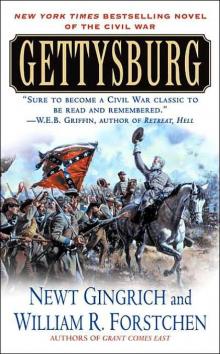 Grant Comes East cw-2
Grant Comes East cw-2 Victory at Yorktown: A Novel
Victory at Yorktown: A Novel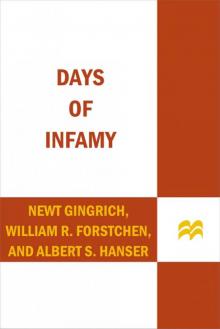 Days of Infamy
Days of Infamy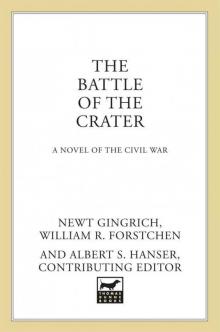 The Battle of the Crater: A Novel (George Washington Series)
The Battle of the Crater: A Novel (George Washington Series)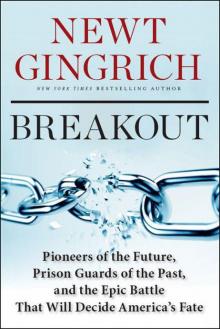 Breakout: Pioneers of the Future, Prison Guards of the Past, and the Epic Battle That Will Decide America's Fate
Breakout: Pioneers of the Future, Prison Guards of the Past, and the Epic Battle That Will Decide America's Fate Pearl Harbour and Days of Infamy
Pearl Harbour and Days of Infamy Pearl Harbour - A novel of December 8th
Pearl Harbour - A novel of December 8th Understanding Trump
Understanding Trump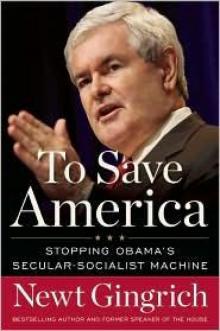 To Save America: Abolishing Obama's Socialist State and Restoring Our Unique American Way
To Save America: Abolishing Obama's Socialist State and Restoring Our Unique American Way